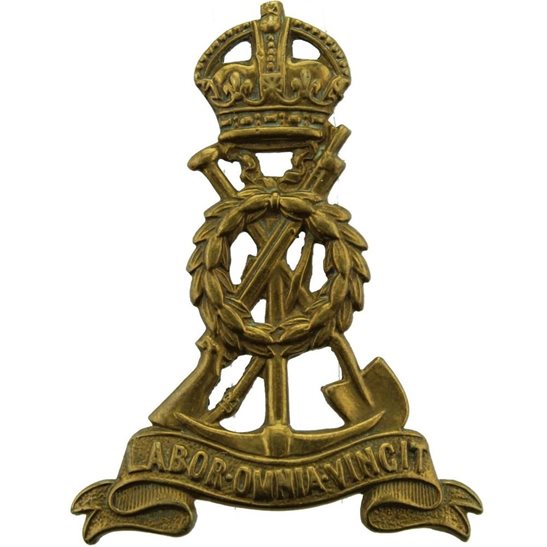Personal Details
Born: 3 February 1889 and baptised 6 March at St Alkmund’s Church, Whitchurch.
Family: He was the fifth of six children born to Edward and Ellen Edge. In 1915 he married Phoebe Ashley in Whitchurch and together they had five children, Dorothy E, Terence E, Kenneth, Geoffrey and Iris A.
Residence: At the time of Albert’s birth, the family were living at Havannah Buildings and appeared to remain there until at least 1911, according to the 1891, 1901 and 1911 census returns. At the time of his army discharge, Albert was living at 16 Liverpool Road, Whitchurch, Shropshire. In 1951 his address was given as 27 Liverpool Road.
Employment: In 1901 he was a tailor’s apprentice, probably to his father. Ten years later he was described as a tailor.
Died: In 1951, aged 62. Buried in Whitchurch cemetery on 20 September that year.
Military Details
Regiment: Labour Corps, formerly the King’s Liverpool Regiment
Rank: Private
Service Number: 40950, formerly 66139
Date of Enlistment: According to The Whitchurch Herald, Albert enlisted in October 1914.
Date of Discharge: Unknown
Reason for Discharge: Demobilisation
Other Information: Spent some time in the 18th General Hospital in Arras, France in 1917. In receipt of medical pension. Brother of Clement Edge who served in the RFC/RAF.
Albert was awarded the Campaign Medals (British War Medal, and Victory Medal).

The British War Medal (also known as 'Squeak') was a silver or bronze medal awarded to officers and men of the British and Imperial Forces who either entered a theatre of war or entered service overseas between 5th August 1914 and 11th November 1918 inclusive. This was later extended to services in Russia, Siberia and some other areas in 1919 and 1920. Approximately 6.5 million British War Medals were issued. Approximately 6.4 million of these were the silver versions of this medal. Around 110,000 of a bronze version were issued mainly to Chinese, Maltese and Indian Labour Corps. The front (obv or obverse) of the medal depicts the head of George V. The recipient's service number, rank, name and unit was impressed on the rim.
The Allied Victory Medal (also known as 'Wilfred') was issued by each of the allies. It was decided that each of the allies should each issue their own bronze victory medal with a similar design, similar equivalent wording and identical ribbon. The British medal was designed by W. McMillan. The front depicts a winged classical figure representing victory. Approximately 5.7 million victory medals were issued. Interestingly, eligibility for this medal was more restrictive and not everyone who received the British War Medal ('Squeak') also received the Victory Medal ('Wilfred'). However, in general, all recipients of 'Wilfred' also received 'Squeak' and all recipients of The 1914 Star or The 1914/1915 Star (also known as 'Pip') also received both 'Squeak' and 'Wilfred'. The recipient's service number, rank, name and unit was impressed on the rim.

